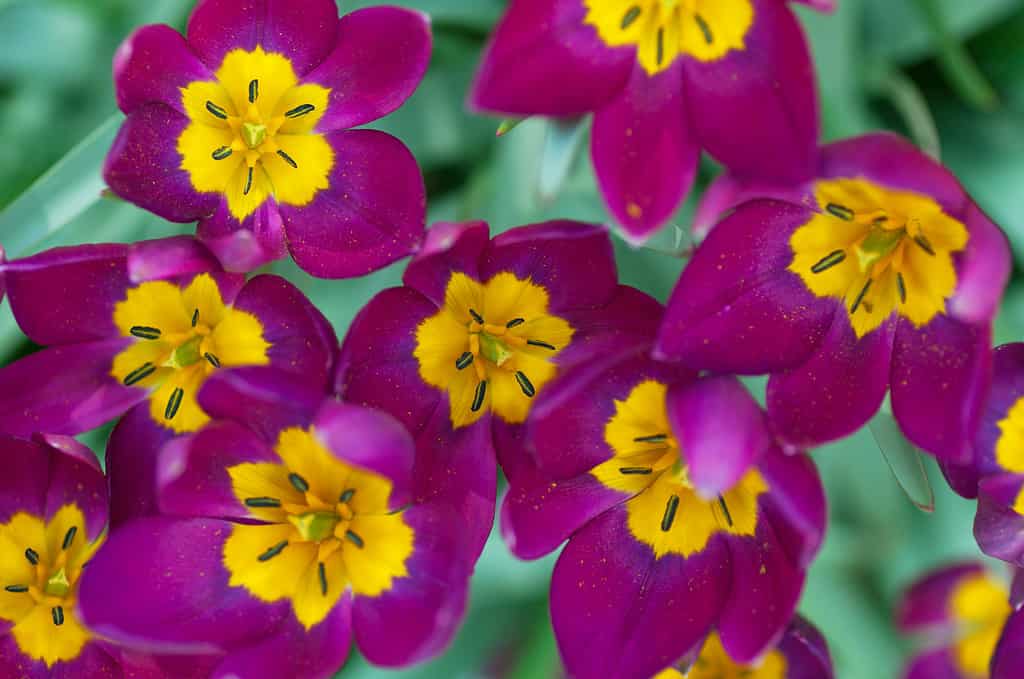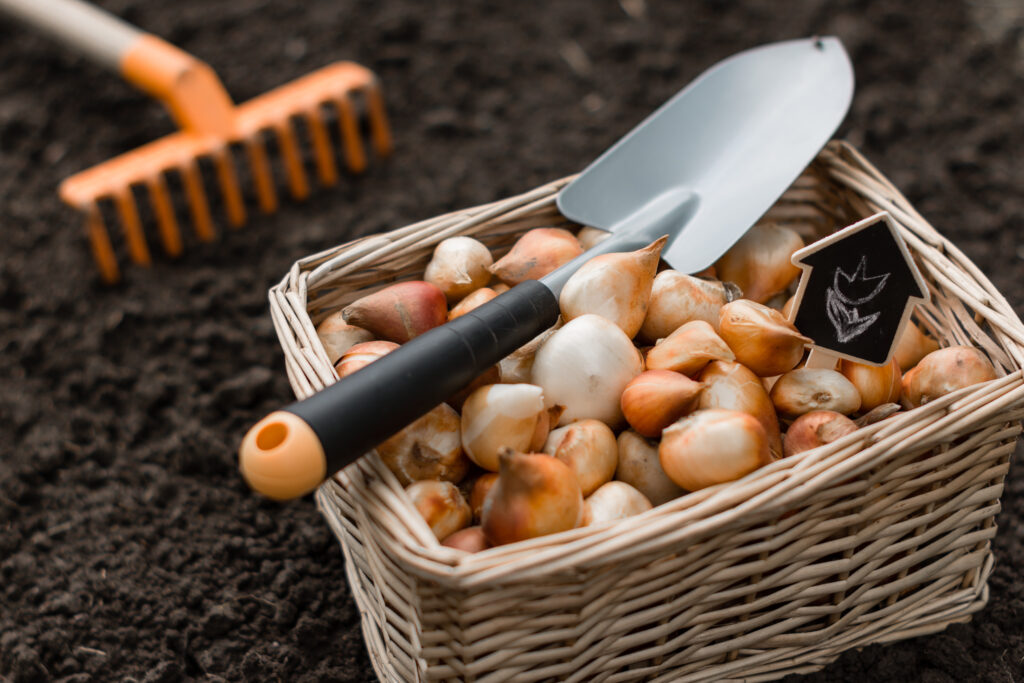Gardeners in Arizona who wish for the touch of tulips upon their landscape will need to adopt a growing strategy suited to their particular climate. Tulips thrive in areas with cold winters but may require special care in hot desert regions with milder winters. With an abundance of tulip varieties to choose from, you may be wondering which tulips to grow in Arizona. We’ll take a look at several varieties that thrive in the state, how to plant them, care for them, and when to expect those cheerful blooms.
5 Tulips that Thrive in Arizona
Tulips grow best in USDA Hardiness Zones 3-7 and flourish in regions with cold winters. The northern third of Arizona is a semi-arid to arid plateau with mild summer temperatures and cold winters. This region of Arizona ranges from zone 4-7. The rest of the state is a low-lying desert with extremely hot summers and mild winters, zones 8-10. Tulips are sensitive to temperature, and in fact their life cycle depends on it. Hardy varieties and special care may be required in the hottest regions of the state.
Any tulip variety can thrive in northern Arizona with proper preparation and care. The warmer southern regions are best suited for the tough, non-hybridized Species type tulips. Pre-chilling bulbs in the hottest climates will be necessary for healthy blooms. Forcing tulips indoors can be a great option for tulips in Arizona any time of year!
Here are 5 tulip varieties to try planting in your Arizona garden this year:
1. The Desert Tulip

The pointed red blooms and wavy foliage of the Desert Tulip lend this hardy bloomer a delicate edge.
©Agnieszka Kwiecień, Nova, CC BY-SA 4.0 via Wikimedia Commons – Original / License
With incredible pointed petals, scarlett red blooms and wavy foliage the Desert Tulip (Tulipa sustola) is a tough tulip variety of the Species group. It has a deep, darkly colored internal base with yellow markings forming a star in its center. This variety reaches an average height of 7 inches.
Species tulips are also referred to as Miscellaneous Group or Botanical Tulips. They have not been hybridized and are built to withstand harsh environments. While usually shorter and perhaps less showy than many hybrid tulips, they boast nature’s elegant design and tend to come back year after year as perennials in the garden. Desert tulips thrive in rocky, sandy soils and full sunlight conditions that mimic their native habitat. Species tulips make an excellent addition to rock gardens and ideal for xeriscaping!
2. Lady Tulips

Lady Tulips are a tulip in the Species or Botanical Group that naturalize well in the garden.
©iStock.com/Kristine Radkovska
Another Species variety, Lady Tulips (Tulipa clusiana) have cream or white blooms with pink to dark red exteriors. They reach up to 12 inches tall and reveal a red or purple star at their center when in full bloom. Like most Species type tulips, Lady Tulips naturalize well and will often grow larger colonies over time, delighting the garden with their delicate grandeur.
3. Turkestan Tulip
A wildflower in its native habitat, the Turkestan tulip (Tulipa turkestanica) lends a natural charm to any landscape. Producing multiple fragrant blooms per stem, this variety provides a perfect early-season food source for local pollinators. This tulip grows 8-12 inches tall and features pointed white petals and an orange-yellow center. Plant these hardy tulips along terraces and beneath shrubs or deciduous trees for a delightful splash of color.
4. Persian Pearl Tulip

Persian Pearl tulips offer a high contrast display for any Arizona garden.
©iStock.com/Martin Wahlborg
The Persian Pearl tulip (Tulipa pulchella) reaches an average of 3-5 inches tall. It features prominent magenta petals and a bright yellow center. This high-contrast bloomer multiplies itself readily and gives off a lovely fragrance. Large plantings of Persian Pearls make for an impactful display. If deer tend to nibble your spring blooms before you get a chance to really appreciate them, consider this pearl of planting wisdom: all Species Group tulips varieties are known to be deer resistant!
5. Desert Sun

A Darwin Hybrid variety, Desert Sun Tulip is a perfect match to those Arizona sunsets.
©Sergey V Kalyakin/Shutterstock.com
A member of the Darwin Hybrid Group of Tulips, Tulipa ‘Desert Sun’ is a showstopper with golden orange and yellow hues. Varieties that belong to the Darwin Hybrid group are some of the most perennial hybrid tulips and will often bloom season after season with the proper care. In the hottest regions of Arizona, you’ll likely want to plant them as annuals. These tough hybrids have sturdy stems that are wind and weather resistant. A great variety to color your Arizona landscape or for forcing indoors any time of year. These bold beauties make excellent bouquets, for which the pyramid form of their immature buds are highly revered!
Pre-Chilling Tulip Bulbs for Warm Climates
Tulips require a lengthy period of cold temperatures in order to initiate proper growth. They need to be kept at 35 to 45 degrees Fahrenheit for 10 to 14 weeks in order to spark the biochemical response that results in root growth and flower formation. While winters in Northern Arizona provide these conditions, pre-chilling the bulbs will be required for the planting zones 8 and above. You can purchase pre-chilled bulbs from your supplier but the process of doing it yourself is simple and rewarding.
To chill your tulip bulbs, put them in your fridge in a container that won’t hold moisture. This can be a paper bag, mesh onion bag or a repurposed egg carton. Store them separately from any fruit, as ripening fruit gives off ethylene gas that can damage the bulbs. Tulip bulbs can be stored longer than the recommended time, but don’t pull them early. Start the chill period in October and you should be ready to plant by December or early January.
When pre-chilling you want to be sure to bring them bulbs quickly from the fridge to the planting area. Get the bulbs planted in the soil before they warm up to the ambient air temperatures!
Warm Climate Pre-Planting
In the warmest, southern regions of Arizona you may want to take the extra step of pre-rooting your tulips before planting. While probably not necessary for Species Group tulips, this is particularly helpful if you want to have exceptional blooms from some of the more sensitive hybrid varieties.
Tulips start to grow healthy roots in soil temperatures of about 32 to 55 degrees. If your region stays mild through winter and the soil temperatures won’t drop below 60 degrees for very long you can pre-plant for best results. Plant your pre-chilled bulbs in small containers, water them and continue to keep them cool in the fridge for another 4-6 weeks before planting outdoors.
When to Plant Tulips in Arizona
The best time to plant tulips will vary slightly depending on your growing region. Northern Arizona tulips should be planted in the fall, roughly 6-8 weeks before a hard frost is expected. This part of the state features USDA Plant Hardiness Zones 4-7 and the best planting time will be October to early November. In the warmer regions, Zones 8-10, the best planting time will likely be from November to December or even early January.
How to Plant and Care for Tulips

Tulips look best when planted in clusters rather than rows.
©Jurga Jot/Shutterstock.com
Choose a location with full sunlight and well-draining soil. A rule of thumb is to plant tulips 2-3 times and deep as the bulb is tall. For the best visual, plant in clusters instead of straight rows. Each hole should be spaced about 3-8 inches apart if the bulbs are large. Smaller bulbs, about 1 inch wide or less, only need 1-3 inches between them. Place each bulb in a hole with the pointed side up and cover with soil.
A mulch layer of 2-3 inches atop the soil will help to keep it cool enough and retain moisture. Great mulch options include chopped leaves, straw, evergreen boughs or wood chips. Water your tulip bulbs well right after planting to wake them up. You’ll want to water them once a week for the first month after planting and then leave them be until springtime. When the first sprouts appear in the spring you can begin watering again.
When do Tulips Bloom in Arizona?
Bloom time is highly dependent on the type of tulip you’ll be growing. Most Species Group tulips are early risers, popping up in early spring. Darwin Hybrid tulips are mid-spring bloomers. There are other hybrid groups such as Viridiflora and Double-Late tulips that bloom late in the spring.
After your tulips blooms have brought the joys of their color and fragrance to your springtime you’ll want to retire your tulip beds. If planting as annuals, simply dig up the spent bulbs and compost them. Get ready to plant some new varieties!
If you’ll be growing Species Group tulips or hybrids as perennials, clip the flower heads once the plant has started to wilt and lose its petals. Let the foliage grow until completely limp and yellowed. This allows the plants to continue to photosynthesize and prepare for another season of blooming. Once the tulip foliage is laying down completely you can cut it back or remove it by hand.
Forcing Indoor Tulip Blooms in Any Season

Follow simple instructions and you can force beautiful tulip blooms indoors.
©tomertu/Shutterstock.com
To force tulip blooms indoors during any time of year follow these instructions:
Purchase pre-chilled bulbs or chill them yourself. Prepare planting containers by filling with quality soil up to 3-4 inches from the rim. Once the chilling period is complete, bring the bulbs to their planting containers. Place one bulb in each container just atop the soil and then fill the remainder with soil to the rim. Water at planting and then store potted tulips in a cool, dark location and water lightly about once a week until leaves appear. Once the leaves have appeared, move the containers to a new area in your home with bright but indirect sunlight. Watch for blooms in about 2-3 weeks!
The photo featured at the top of this post is © Mark van Dam/Shutterstock.com
Thank you for reading! Have some feedback for us? Contact the AZ Animals editorial team.







